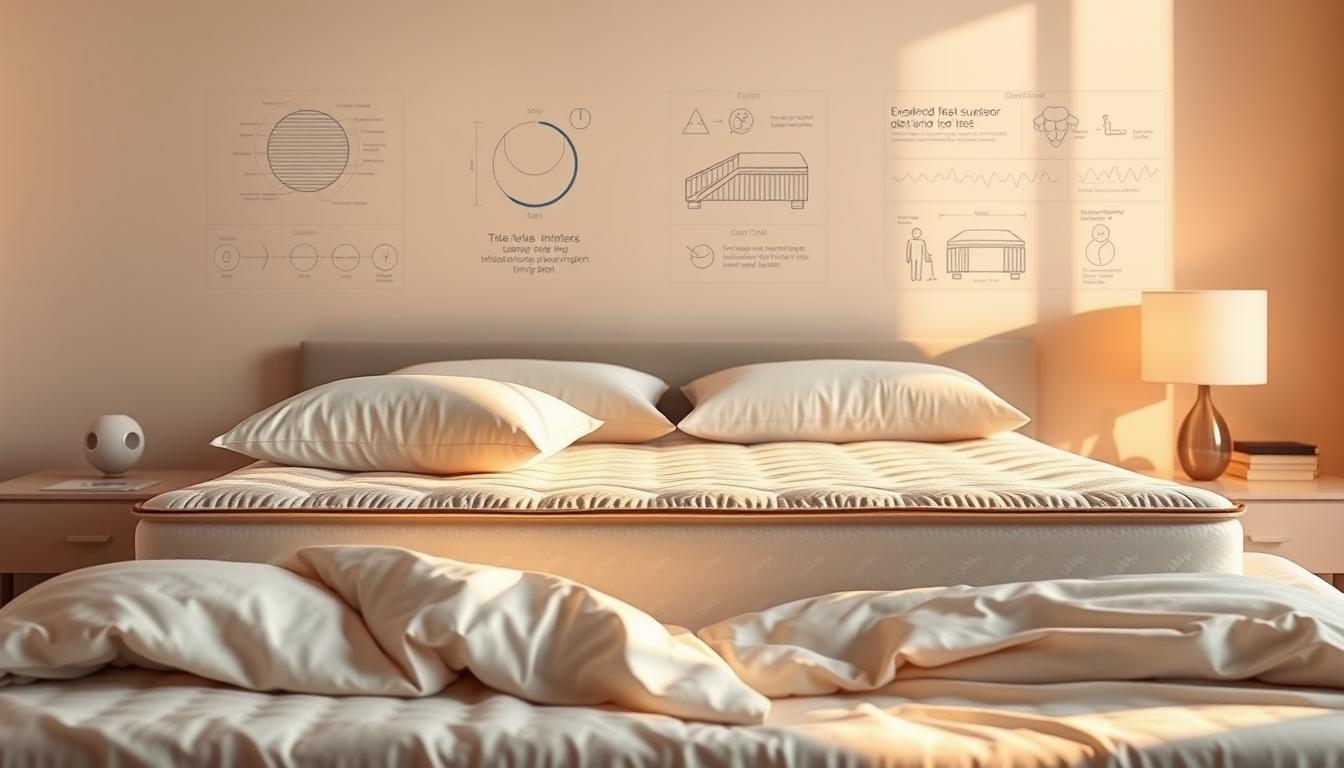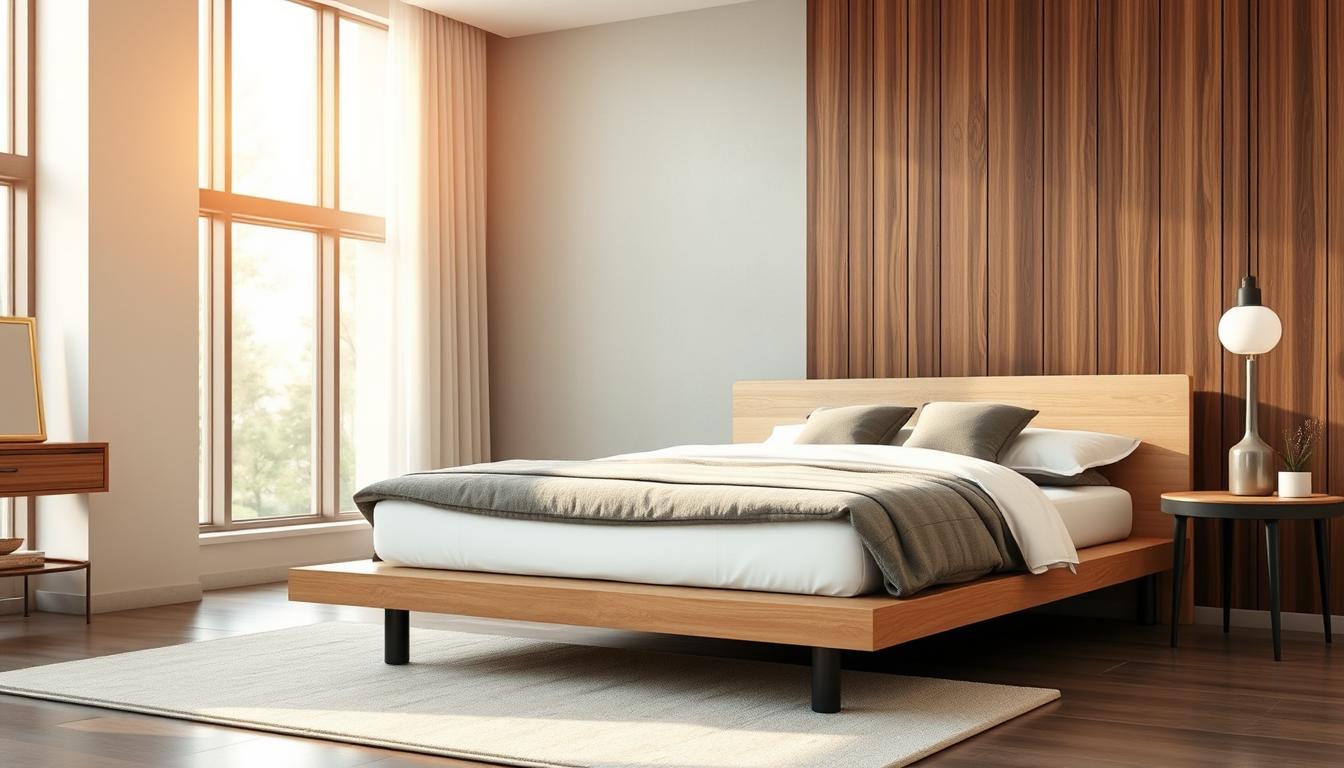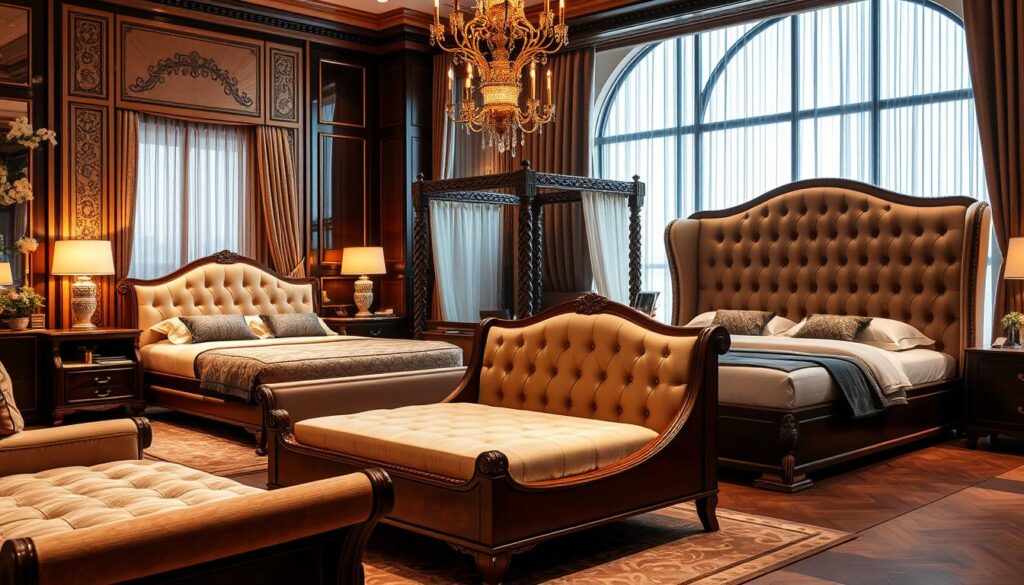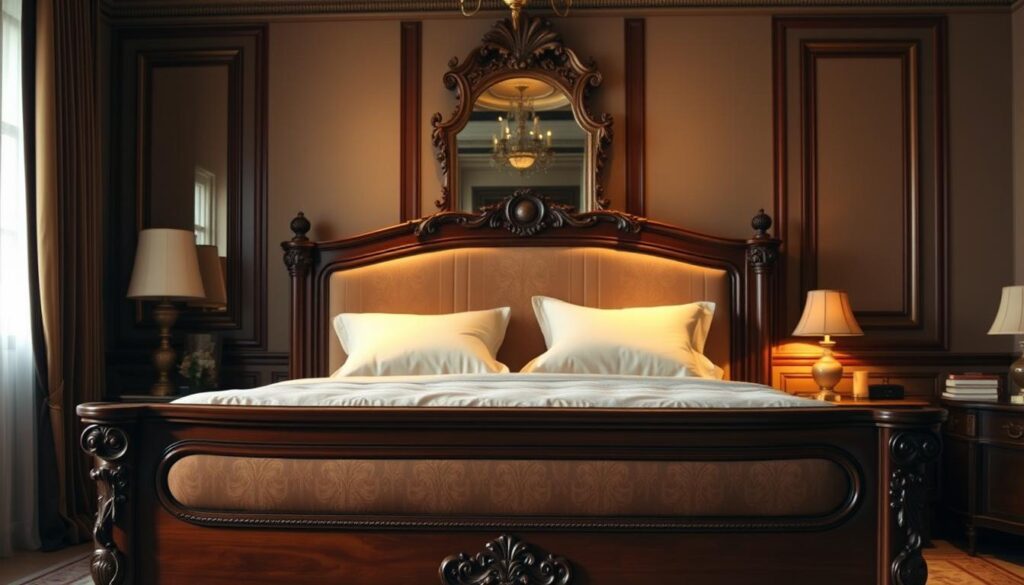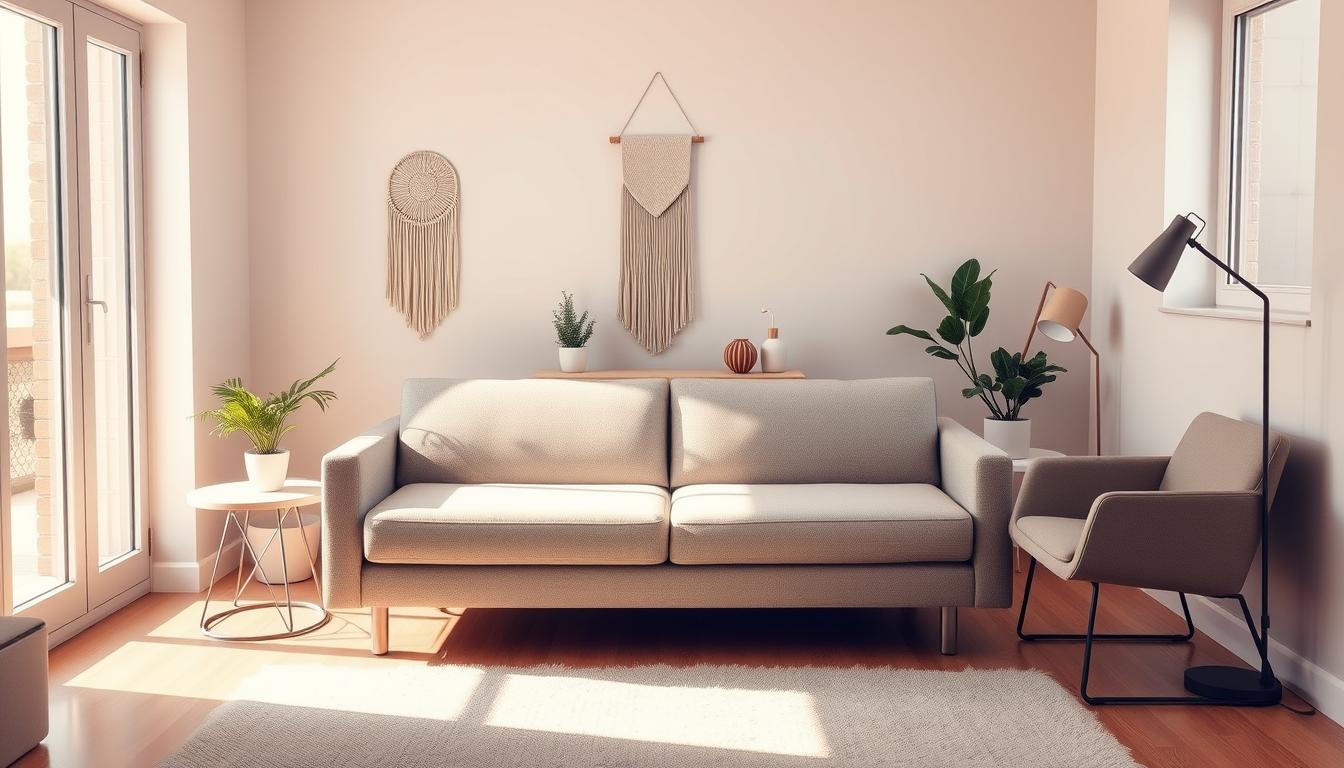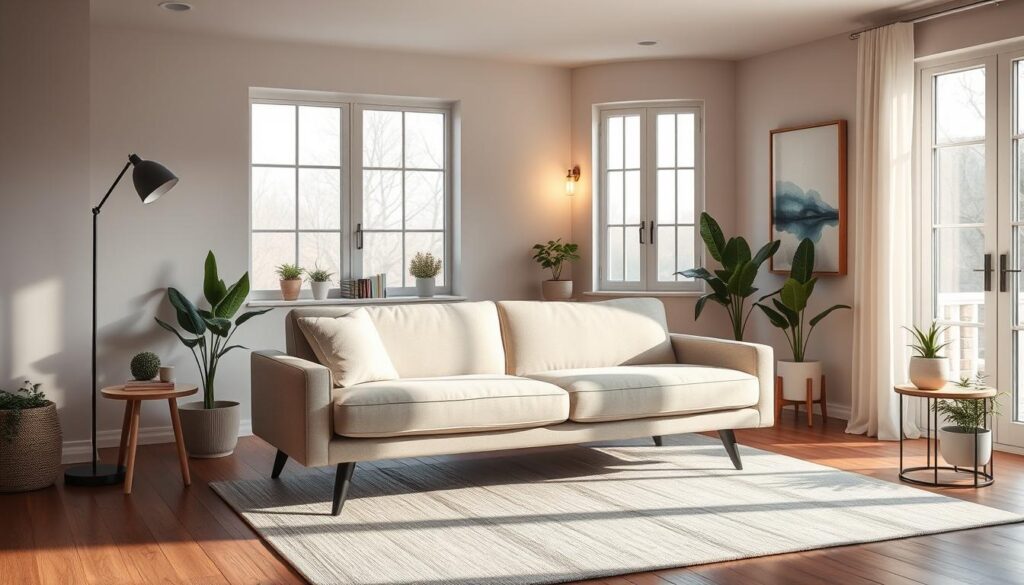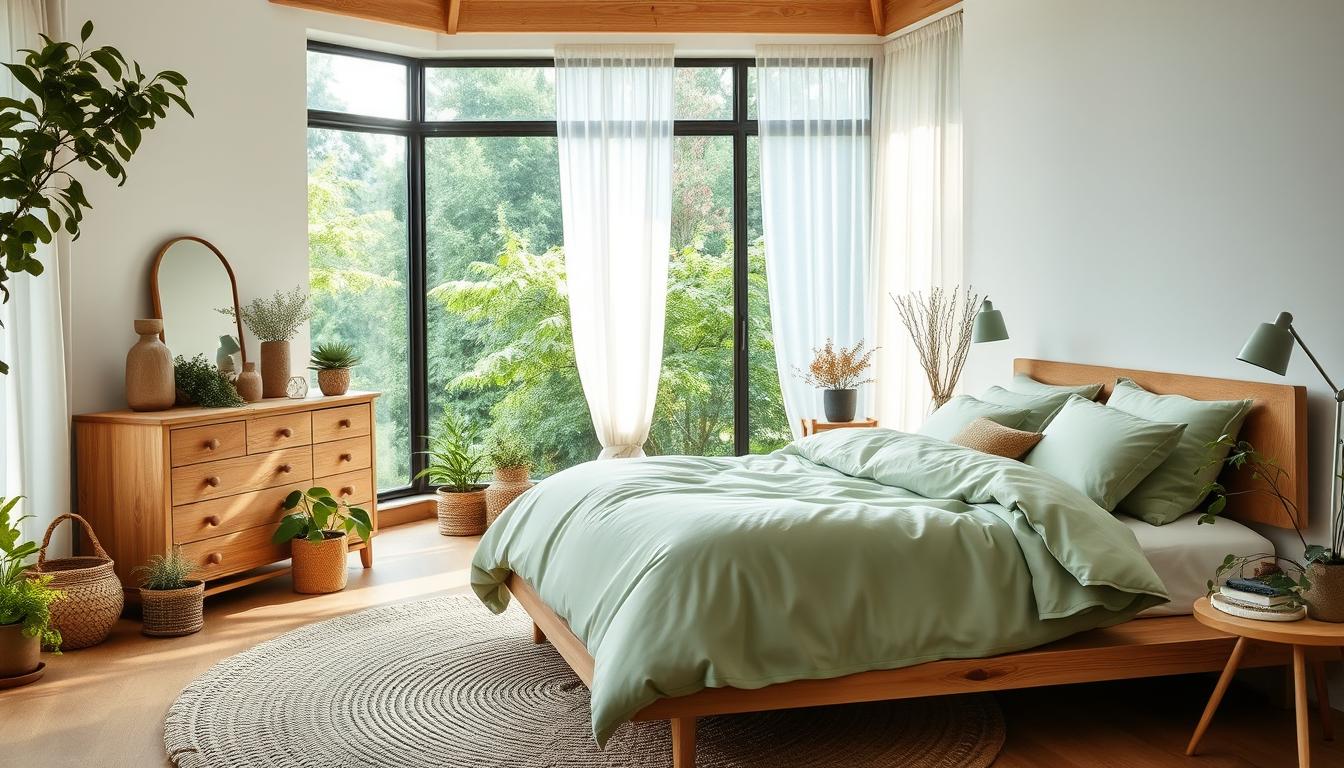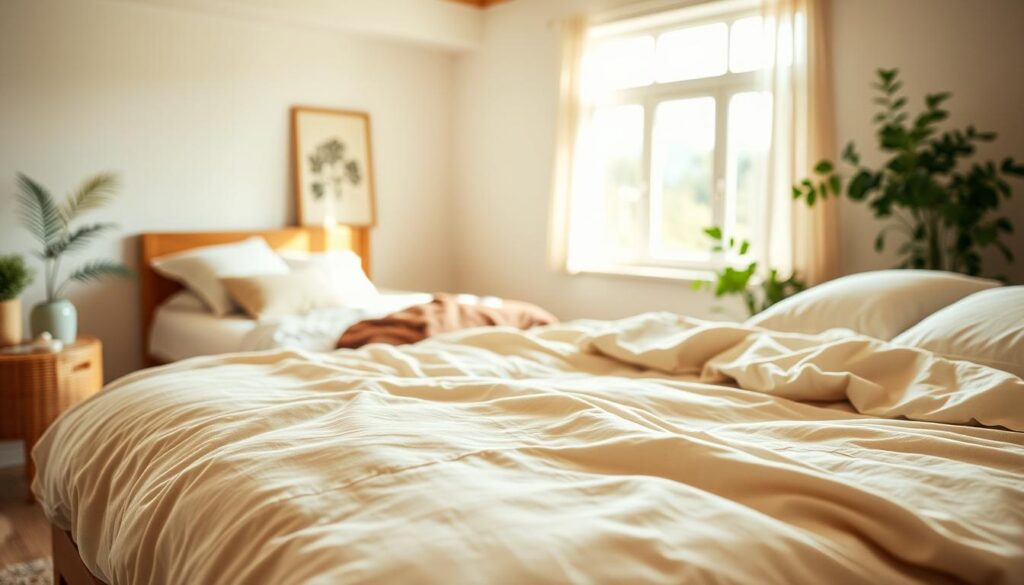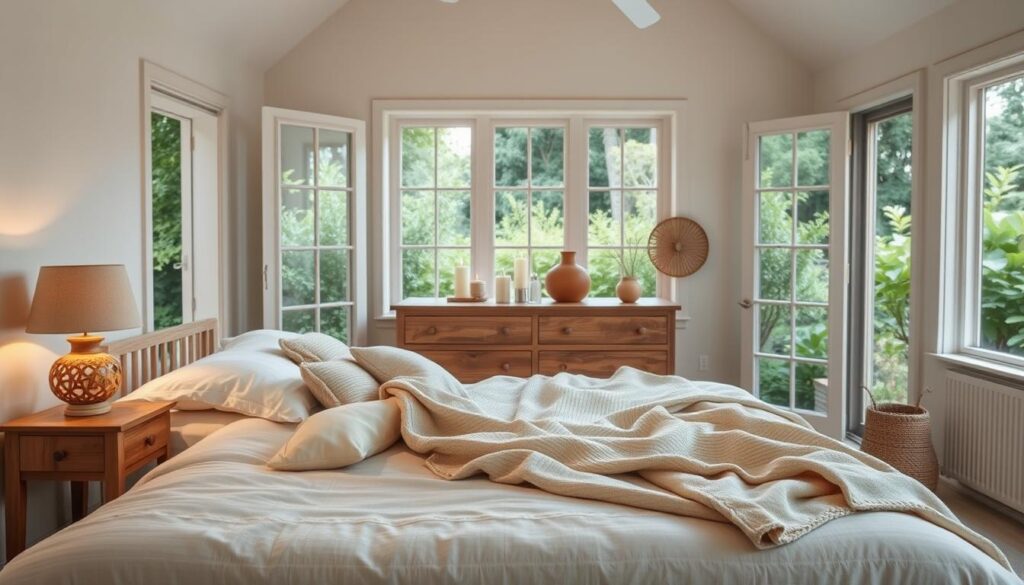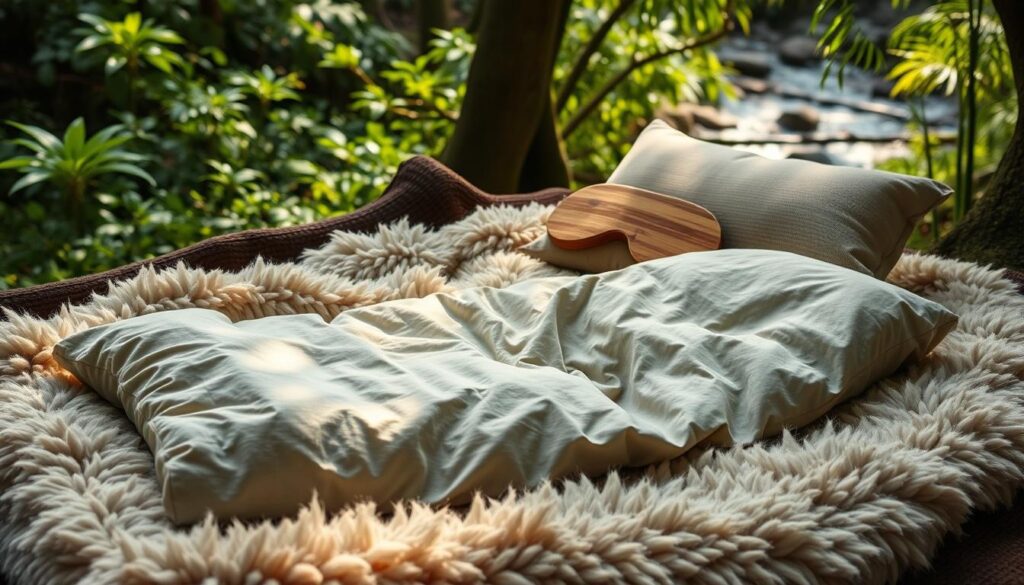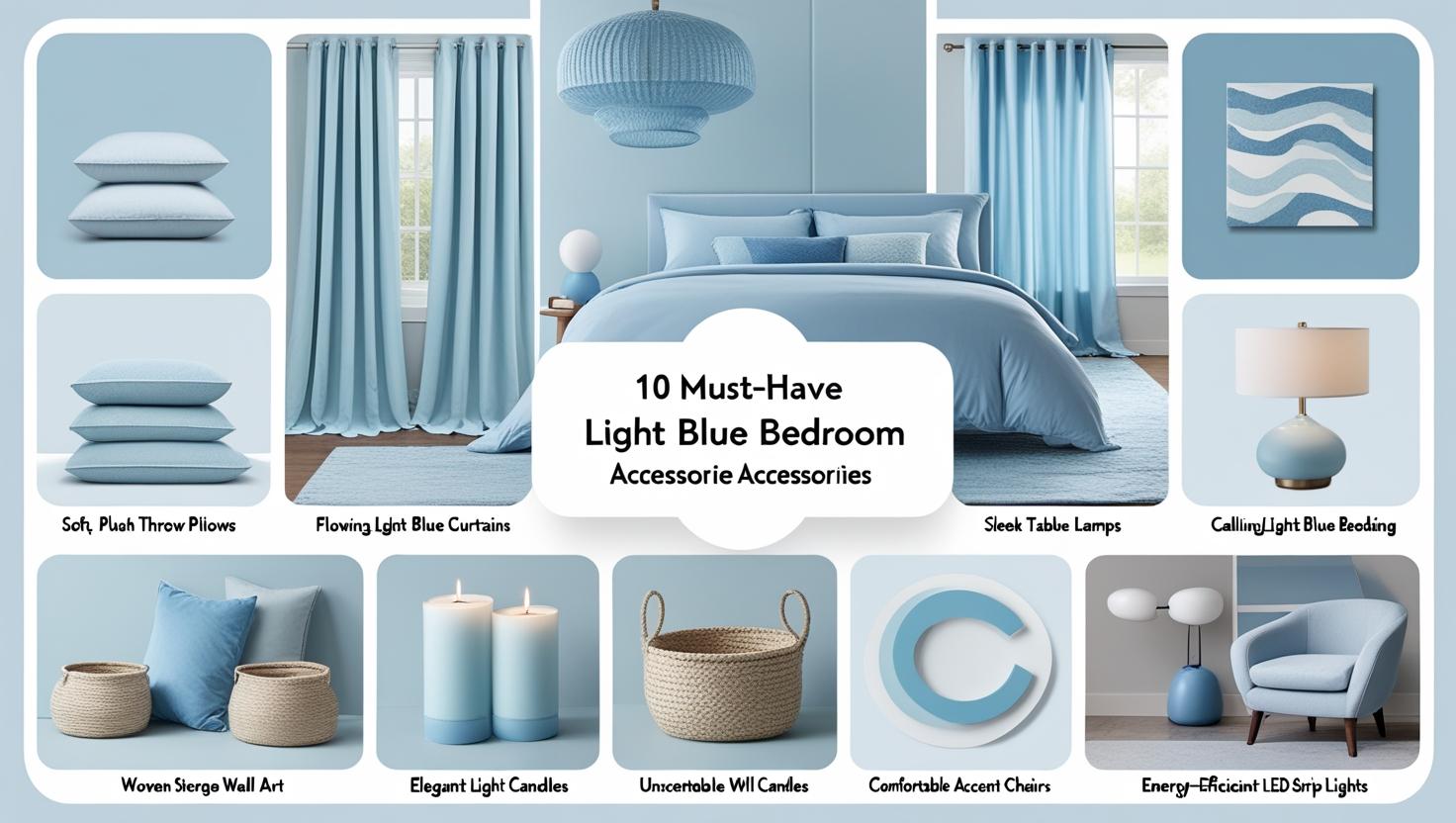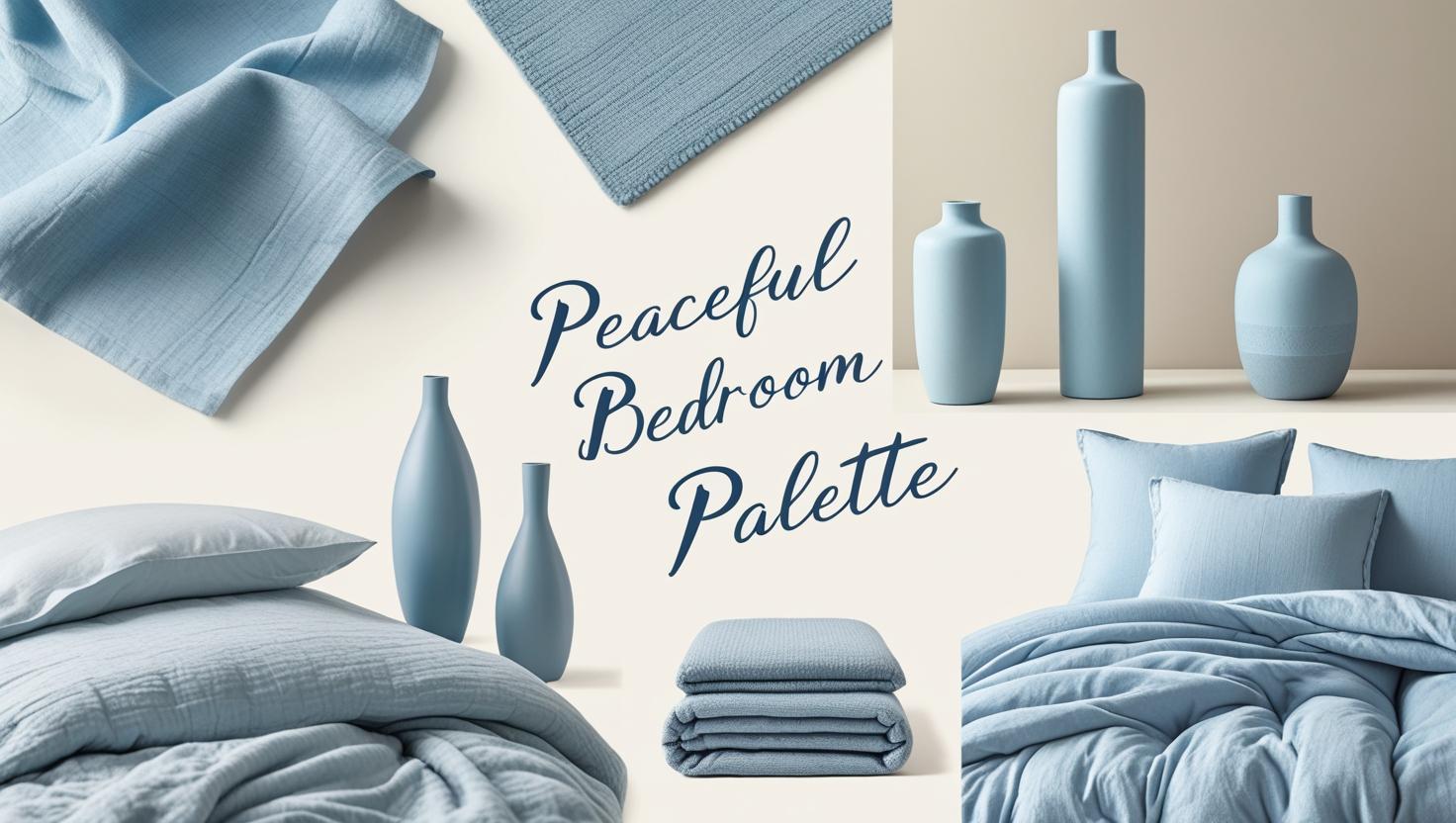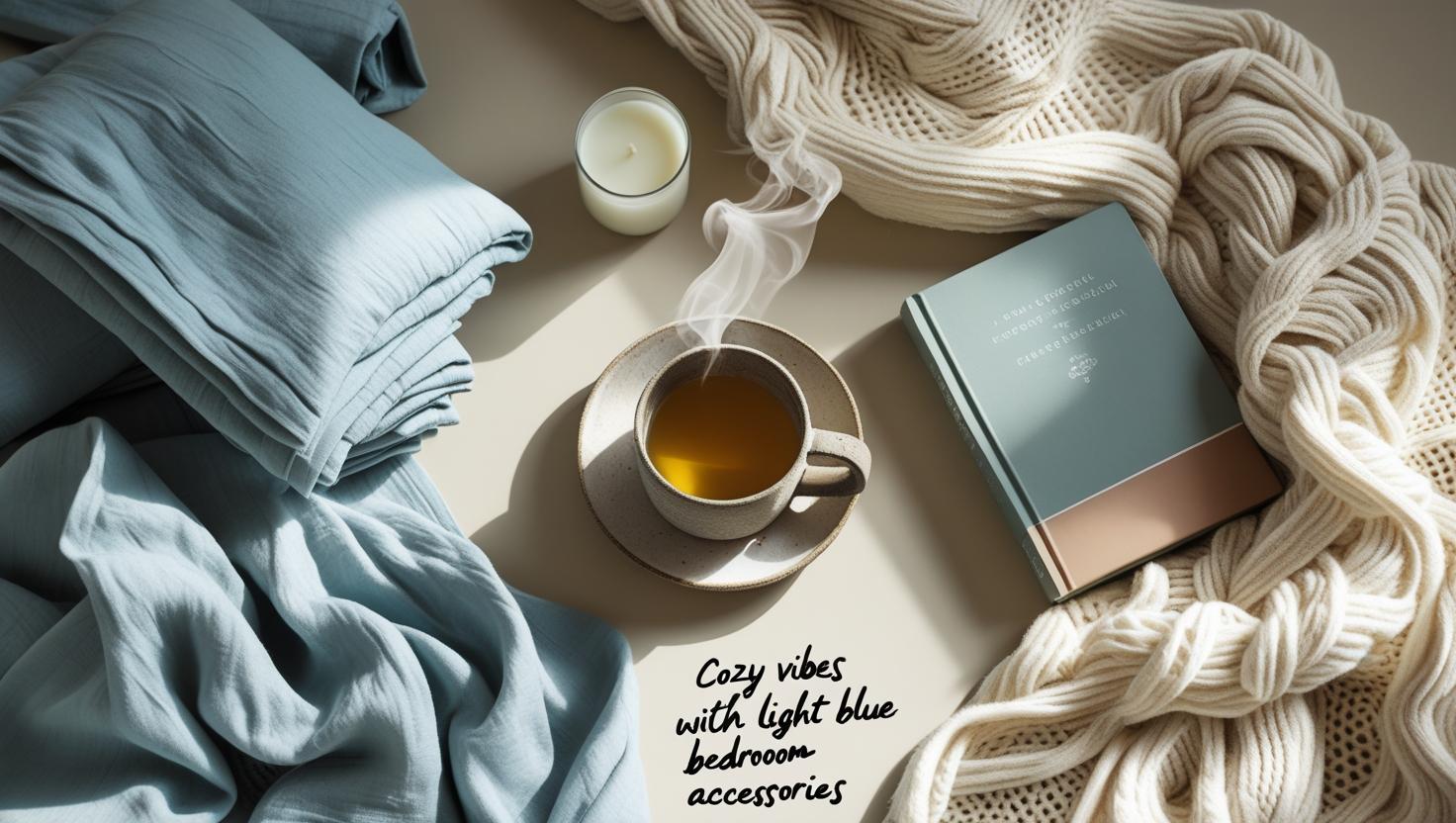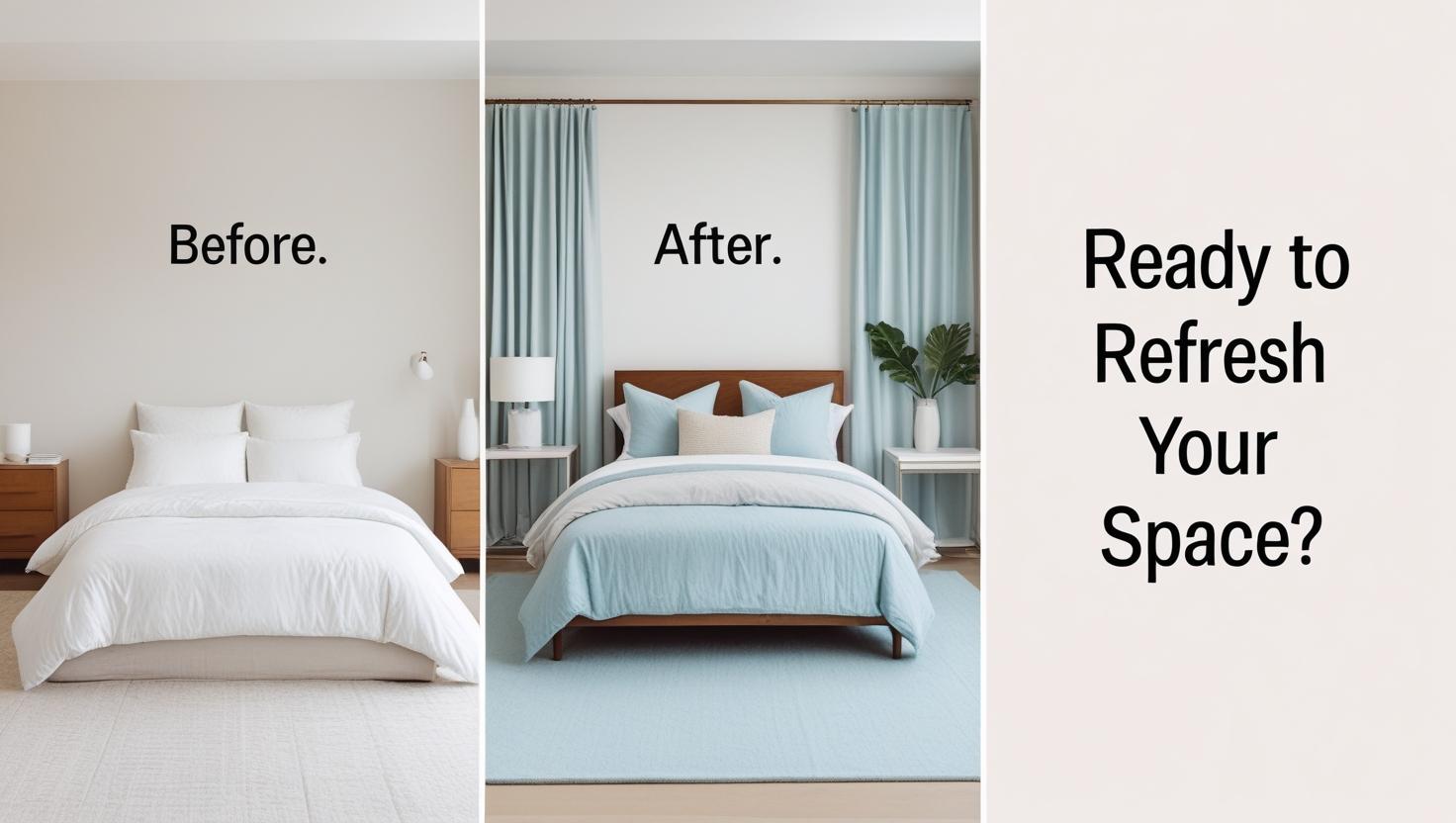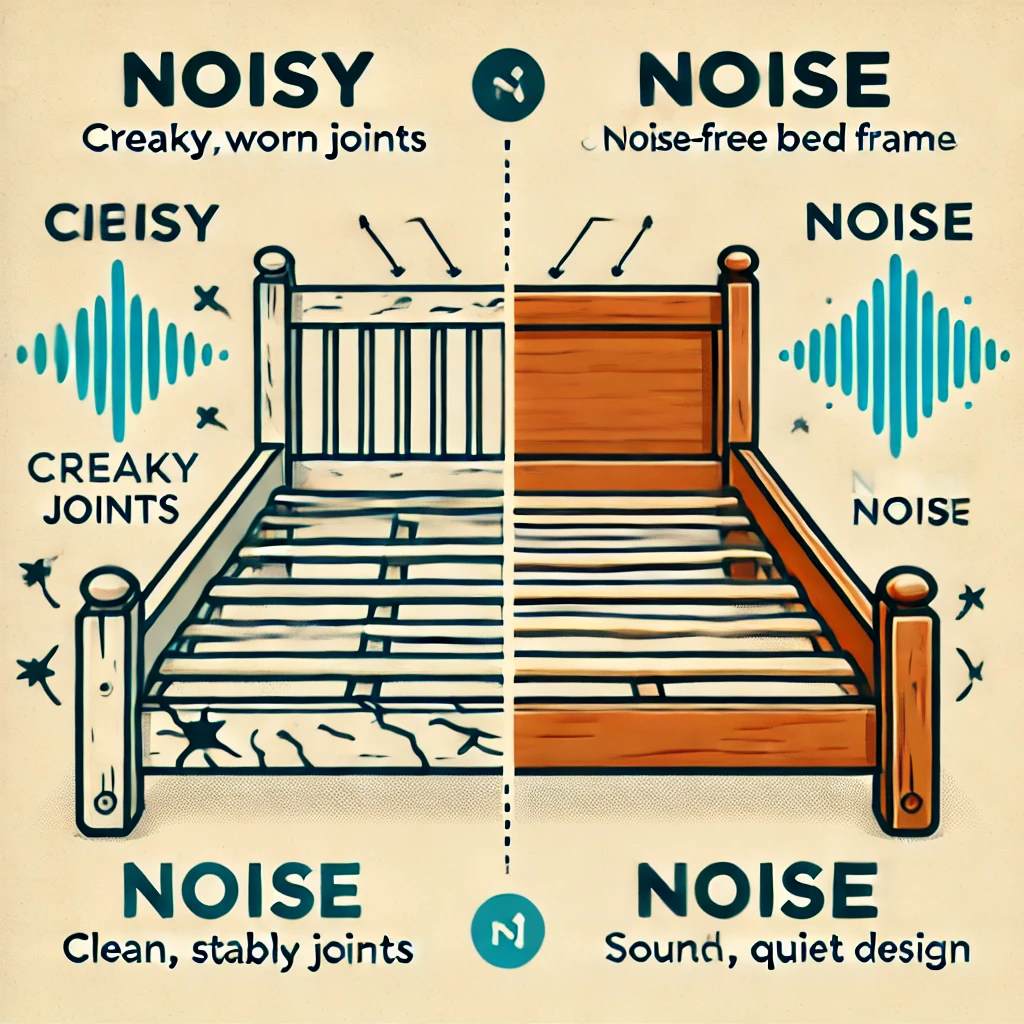Getting a good night’s sleep is key for your health. The quality of your bedding greatly affects how well you rest.
Choosing the right materials and making sure your bedding fits your needs can make a big difference. This is where Sleep Science helps. It guides you on how to set up your sleep space for the best rest.
Key Takeaways
- Quality bedding is essential for good sleep.
- The right materials can make sleep more comfortable.
- Sleep Science helps optimize sleep environments.
- Personalized bedding choices improve sleep quality.
- A well-designed sleep setup promotes restful sleep.
Understanding the Importance of Sleep Quality
Getting good sleep is essential for health and comfort. Sleep helps our bodies and minds recover. It affects how well we think and feel.
The Link Between Sleep and Health
Sleep has different stages, like light and deep sleep, and REM sleep. REM sleep is key for learning and memory. Bad sleep can cause heart disease, diabetes, and obesity.
It also impacts our mental health. Sleep problems can lead to depression and anxiety. So, good sleep is important for our health.
Common Sleep Disorders and Their Impact
Many people have sleep disorders. These include insomnia, sleep apnea, and restless leg syndrome. They cause tiredness, lower productivity, and increase accident risks.
Knowing the causes and signs of these disorders helps manage them. Treatments range from changing habits to medical help for severe cases.
How Bedding Affects Sleep Quality
The right bedding is key for good sleep. A comfy mattress and pillows support your body. They help reduce pain and discomfort.
The materials in bedding also matter. Breathable fabrics keep you cool and improve sleep. Choosing the right bedding can make you feel refreshed in the morning.
Key Components of Comfortable Bedding
A good night’s sleep starts with the right bedding. The comfort of your bedding affects your sleep quality. Bad sheets, pillows, or mattresses can disrupt your sleep.
Mattress Types: Memory Foam, Innerspring, and Hybrid
Choosing the right mattress is key for a good night’s sleep. There are many types of mattresses, each with its own benefits.
Memory Foam Mattresses mold to your body, giving great support and relief. They’re best for side sleepers, easing pressure points.
Innerspring Mattresses have coils for airflow and shape. They’re more affordable and good for back and stomach sleepers.
Hybrid Mattresses mix memory foam or latex with an innerspring core. They offer comfort, support, and breathability.
| Mattress Type | Support Level | Breathability |
|---|---|---|
| Memory Foam | High | Low |
| Innerspring | Medium | High |
| Hybrid | High | Medium |
Pillow Selection for Support and Comfort
Pillows are vital for spinal alignment and comfort. The right pillow can greatly improve your sleep.
Look at the material and loft when picking a pillow. Memory Foam Pillows support well and keep shape. Down Pillows offer loft and are soft.

The Role of Bed Frames and Foundations
Bed frames and foundations are often ignored but are key for comfort. They support your mattress, making it last longer and work better.
A solid bed frame improves your sleep by keeping the mattress stable. It also adds storage or style.
By picking the right bedding components, you can greatly enhance your sleep and comfort.
Materials Matter: Choosing the Right Fabrics
Choosing the right bedding materials is key for a good night’s sleep. The type of fabric can greatly impact your comfort and sleep quality.
Natural vs. Synthetic Fabrics
The debate between natural and synthetic fibers for bedding is ongoing. Natural fibers like cotton, bamboo, and linen are breathable. They help keep you cool and dry. Synthetic fibers, such as polyester, are durable but can trap heat and moisture.
Many bedding options now blend natural and synthetic fibers. For example, cotton-poly blends offer a mix of comfort and practicality.
“The quality of your sleep is directly related to the quality of your bedding. Choosing materials that are breathable, soft, and comfortable against your skin can make all the difference.”
Breathable Materials for Temperature Regulation
Breathability is key in bedding materials. It helps regulate your body temperature during sleep. Materials that allow airflow can prevent overheating and keep you comfortable.
| Material | Breathability | Moisture Wicking |
|---|---|---|
| Cotton | High | Moderate |
| Bamboo | Very High | High |
| Linen | High | High |
Hypoallergenic Options for Sensitive Sleepers
For those with sensitive skin or allergies, hypoallergenic bedding is essential. These materials reduce exposure to allergens like dust mites and pet dander.
Hypoallergenic bedding is made from tightly woven fabrics. This prevents allergens from passing through. Some bedding also has antimicrobial agents to reduce allergic reactions.
By picking the right bedding fabrics, you can greatly improve your sleep and comfort. Whether you focus on breathability, hypoallergenic properties, or a mix of natural and synthetic fibers, there’s a bedding solution for you.
The Science of Sleep Cycles
The science of sleep cycles shows how important bedding is for better sleep. Sleep has many stages, including REM and non-REM sleep. Knowing these stages helps improve sleep quality.
Understanding REM and Non-REM Sleep
REM sleep is when you dream vividly and learn new things. Non-REM sleep has three stages, with the third being the deepest. This stage helps your body recover.
Research shows better sleep comes from deeper REM sleep. This is key for your mental health.

How Bedding Influences Sleep Stages
The right bedding can change your sleep stages. For example, breathable sheets and comfortable pillows help keep your body cool. A cooler body makes it easier to sleep deeply.
The material of your bedding also matters. Natural fabrics like cotton and linen breathe well. Synthetic materials can trap heat. Picking the right bedding can make your sleep better.
Tips for Improving Sleep Architecture
To better your sleep, try these tips:
- Get a comfortable mattress that fits your body.
- Choose breathable bedding to keep your body cool.
- Stick to a regular sleep schedule to keep your cycles in sync.
- Make your bedroom dark, quiet, and cool for better sleep.
By learning about sleep cycles and picking the right bedding, you can sleep better. For more tips, check out Ethical Bedding’s blog.
The Role of Bedding Maintenance in Sleep Quality
Keeping your bedding in good shape is key to a good night’s sleep. Taking care of your bedding makes it last longer. It also helps create a healthier sleep space.
The Importance of Regular Washing
Washing your bedding often is important for cleanliness and comfort. Sweat, dead skin, and other things can build up. This can cause allergies or skin problems. Washing in hot water once a week can help get rid of these issues.
Tips for effective washing: Choose a mild detergent that’s easy on fabrics. Don’t use fabric softeners or bleach, as they can harm the material or cause skin issues.
Tips for Extending the Life of Your Bedding
To make your bedding last longer, follow some easy care tips. Always check the care label for washing instructions. The right cycle and temperature can make a big difference.
Additional tips include: Rotate your mattress often. Avoid over-drying and store bedding properly when not in use.
Recognizing When to Replace Your Bedding
Knowing when to replace your bedding is important for good sleep. Look for signs like sagging, loss of support, or allergies that won’t go away. These are signs it’s time for new bedding.
Key indicators for replacement: Visible sagging or dips in the mattress, flat or lumpy pillows, and frayed or torn fabric on sheets or comforters.
By taking good care of your bedding and knowing when to replace it, you can greatly improve your sleep. Regular care not only makes your bedding last longer. It also keeps your sleep space clean and healthy.
Personalizing Your Sleep Environment
Turning your bedroom into a sleep haven can really boost your rest quality. By making your sleep space your own, you can sleep better.
Adjusting Lighting and Sound Levels
Changing the lights and sounds in your room is key. Dimming the lights and quieting the noise tells your body it’s time to sleep. Try blackout curtains or a white noise machine for the perfect sleep spot.
For a natural feel, use smart light bulbs that fade like a sunset. This helps your body clock stay in sync.
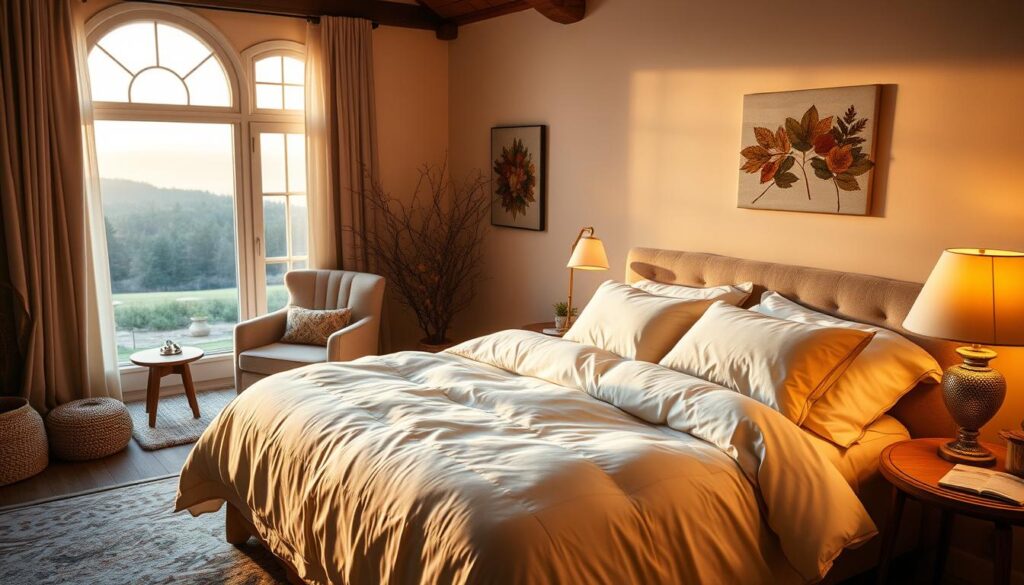
How to Create a Relaxing Sleep Atmosphere
Creating a calm bedroom is more than just lights and sounds. It’s about making a space that invites relaxation. Add calming colors and comfortable bedding to improve your sleep area.
A comfy mattress and pillows are essential. The right bedding can greatly improve your sleep. Choose breathable, hypoallergenic materials for a cozy sleep temperature and allergy prevention.
Incorporating Aromatherapy into Your Bedding Routine
Aromatherapy can enhance your sleep routine. Scents like lavender calm the mind and help you sleep better. Use essential oil-infused pillowcases or lavender-scented mattress sprays in your bedding.
When using aromatherapy, pick high-quality, pure essential oils. Always use them as directed to stay safe and effective.
Innovations in Bedding Technology
New advancements in bedding are changing how we sleep, making it more comfortable and better. Technology in bedding is creating new ways to improve sleep. This is exciting for those wanting to enhance their sleep experience.
Smart Mattresses and Sleep Trackers
Smart mattresses and sleep trackers lead the way in sleep tech. They track sleep patterns, giving insights into sleep quality. Some smart mattresses even detect sleep disorders and adjust to help.
Learn more about how bedding impacts sleep quality on Ethical Bedding’s blog.
Temperature-Controlled Bedding
Temperature-controlled bedding is another big leap. It keeps sleep temperature just right all night. This is great for those who sleep too hot or cold.
The Future of Sleep Science and Bedding Designs
The future of sleep science looks bright, with ongoing research. We’ll see even more innovative bedding as our understanding grows.
Here’s a comparison of some key features of innovative bedding technologies:
| Feature | Smart Mattresses | Temperature-Controlled Bedding |
|---|---|---|
| Sleep Tracking | Yes | No |
| Adjustable Firmness | Yes | No |
| Temperature Regulation | Sometimes | Yes |
Bedding tech is getting more personal and advanced. By using these new innovations, you can greatly improve your sleep.
Eco-Friendly Bedding Options
The world is getting greener, and so is our bedding. People want bedding that’s good for the planet and helps them sleep better. This shift is huge.
Sustainable Materials and Certifications
Choosing the right materials is key for eco-friendly bedding. Organic cotton, bamboo, and recycled polyester are top picks. Look for GOTS and Oeko-Tex certifications to ensure quality and safety.
Benefits of Choosing Eco-Friendly Bedding
Going green with your bedding has many perks. It’s better for the environment and can improve your sleep. These materials are soft, breathable, and good for your skin. For more on sleep quality, check out The Science of Sleep.
| Material | Benefits | Certifications to Look For |
|---|---|---|
| Organic Cotton | Breathable, Soft, Hypoallergenic | GOTS |
| Bamboo | Eco-friendly, Moisture-wicking, Durable | Oeko-Tex |
| Recycled Polyester | Reduces Waste, Energy-efficient, Versatile | Recyclable |
How to Care for Sustainable Bedding
Proper care extends the life of your eco-friendly bedding. Wash it in cold water with eco-friendly cleaners. Avoid over-drying. This keeps your bedding comfy and sustainable.
By picking eco-friendly bedding and caring for it right, you help the planet and sleep better. Make the change today and feel the difference.
Tips for Creating Your Ideal Sleep Space
Creating your ideal sleep space is more than just picking the right bedding. It’s about making a place that helps you relax and feel refreshed. By setting up your bedroom for sleep, choosing the right bedding, and making it your own, you can improve your sleep a lot.
Arranging Your Bedroom
To make your bedroom better for sleep, think about how it’s laid out. Make sure your bed is away from sunlight and drafts. A clean and organized room also helps you sleep better.
Layering for Comfort
Layering your bedding is key for comfort and style. Start with a good mattress and add layers of sheets, blankets, and a duvet. This keeps you cool and makes your room look cozy, helping you sleep better.
Personalizing Your Space
Make your sleep space your own to make it more welcoming. Add things that show your personality, like art or calming colors. Choosing the right bedding and making your space personal means you’re investing in a good night’s sleep.
FAQ
What is bedding science, and how does it impact sleep quality?
Bedding science is the study of how bedding affects sleep. It looks at materials, design, and care. The right bedding can make your sleep better by supporting and cooling you.
How do I choose the right mattress for better sleep?
Picking the right mattress depends on what you like and how you sleep. Think about the type, firmness, and how it breathes. This ensures a good night’s sleep.
What are the benefits of natural fibers in bedding?
Natural fibers like cotton and bamboo are good for sleep. They breathe well, are soft, and don’t cause allergies. They keep you cool and dry, making sleep better.
How often should I wash my bedding?
Wash your bedding every one to two weeks. This keeps it clean and stops allergens from building up.
What are some tips for creating a relaxing sleep atmosphere?
For a calm sleep space, adjust lights and sounds. Use scents and keep it cool. Add calming colors and comfy bedding to make it cozy.
What are some eco-friendly bedding options?
Eco-friendly bedding uses materials like organic cotton and recycled polyester. Look for GOTS and Oeko-Tex to ensure they’re good for the planet.
How can I personalize my sleep environment to improve sleep quality?
Make your sleep space your own by adjusting lights and sounds. Use scents and pick comfy bedding. Think about what you like and need for a good night’s sleep.
What are some innovations in bedding technology?
New bedding tech includes smart mattresses and sleep trackers. These help by giving personalized support and tracking sleep. They also keep you cool.
How can I extend the life of my bedding?
To keep bedding lasting, wash and dry it gently. Avoid over-drying and store it in a cool place. This prevents damage and keeps it comfy.
When should I replace my bedding?
Replace bedding when it’s worn out or stained. Mattresses last seven to ten years. Sheets and pillowcases need replacing every two to five years.

